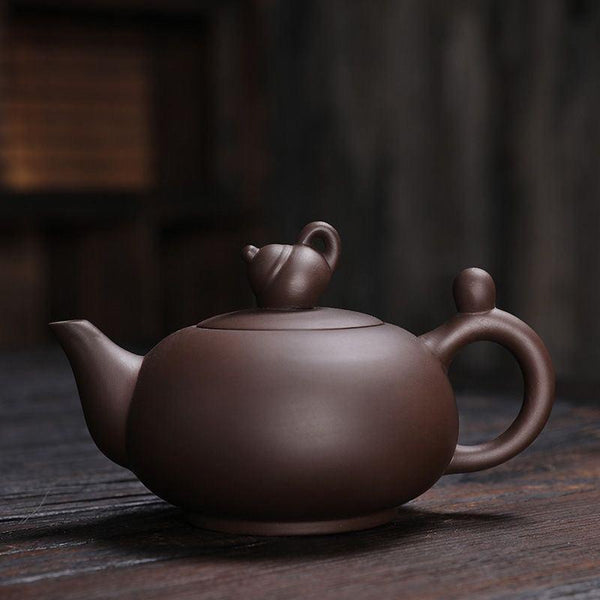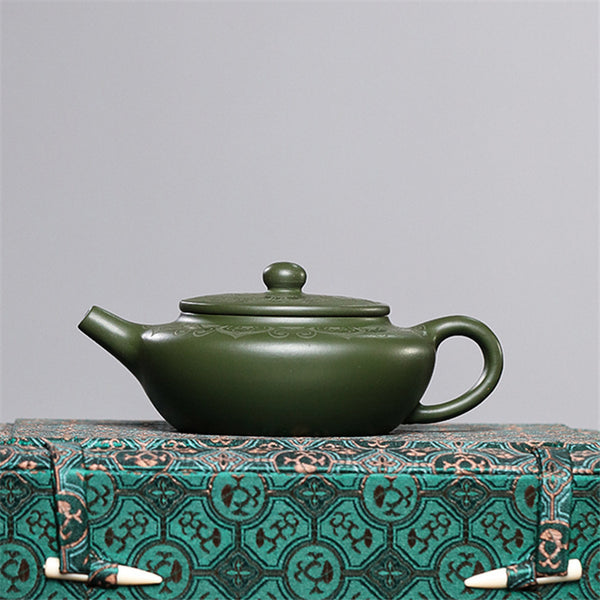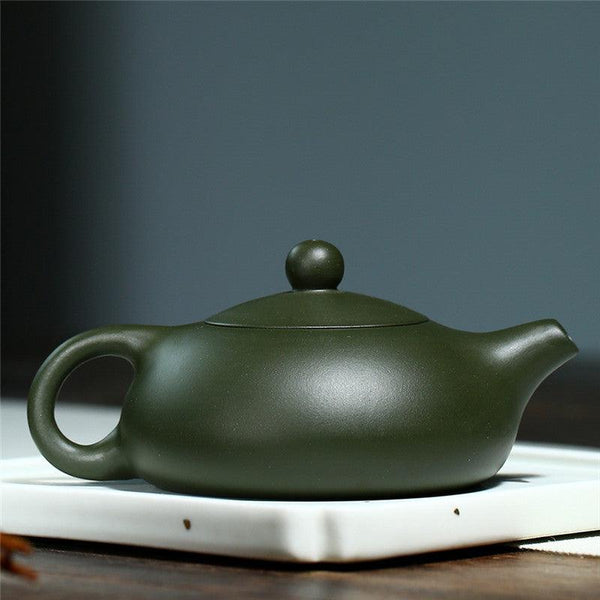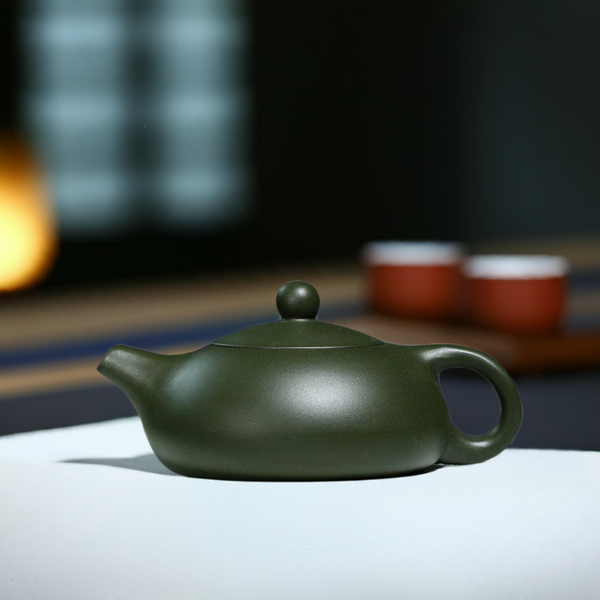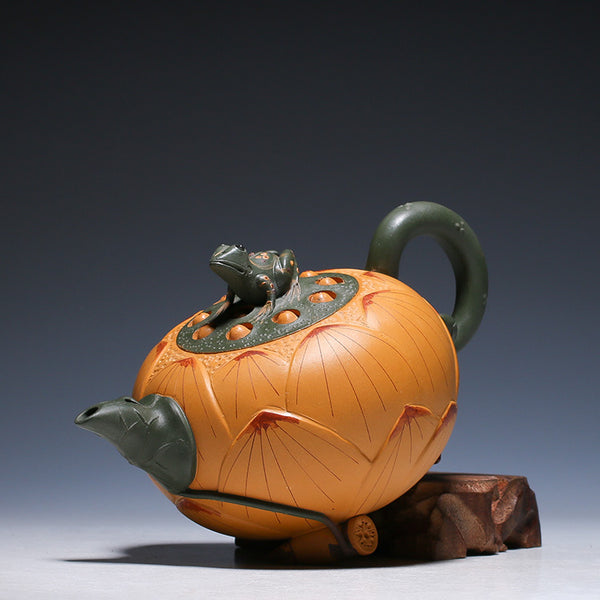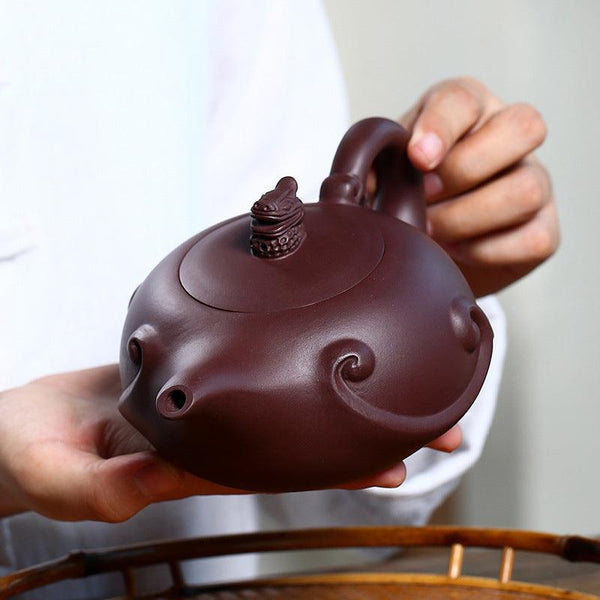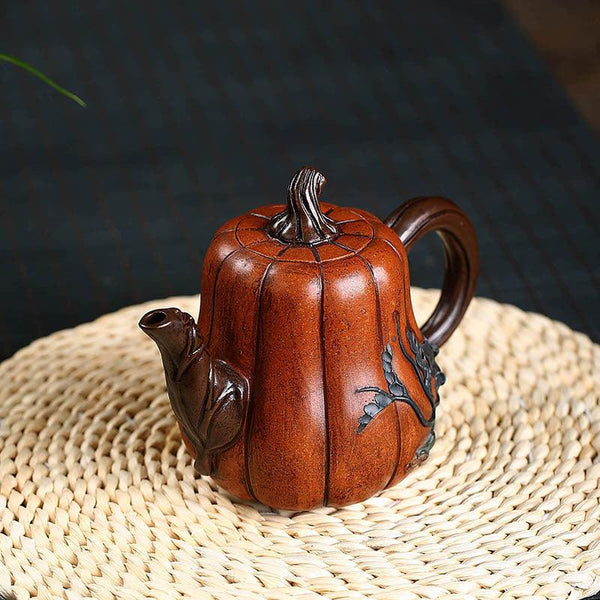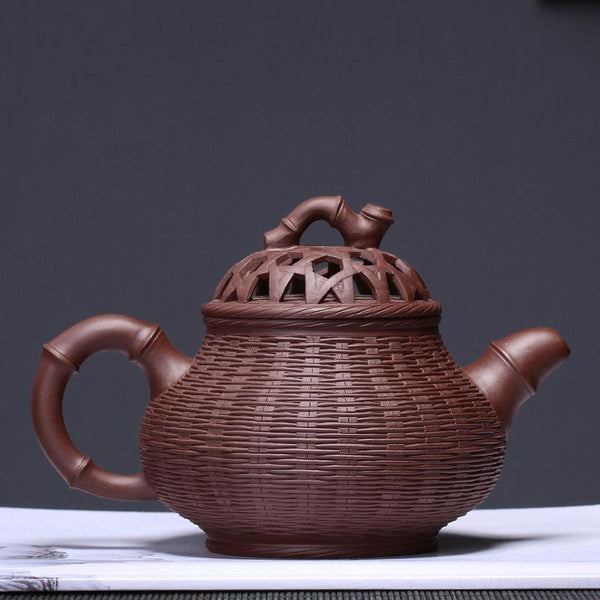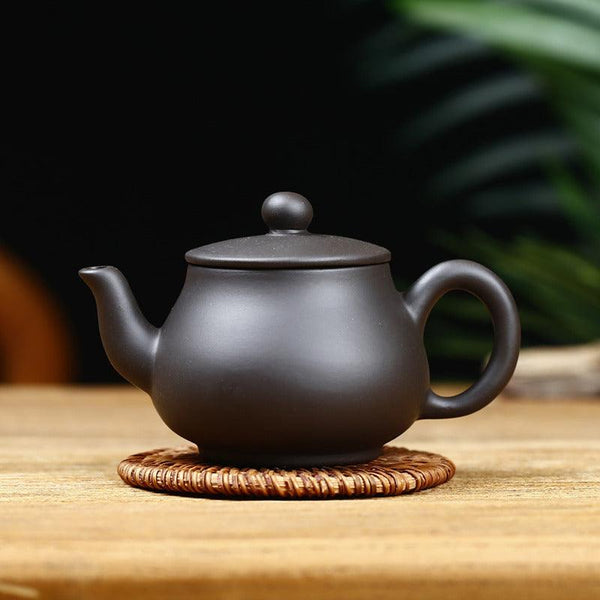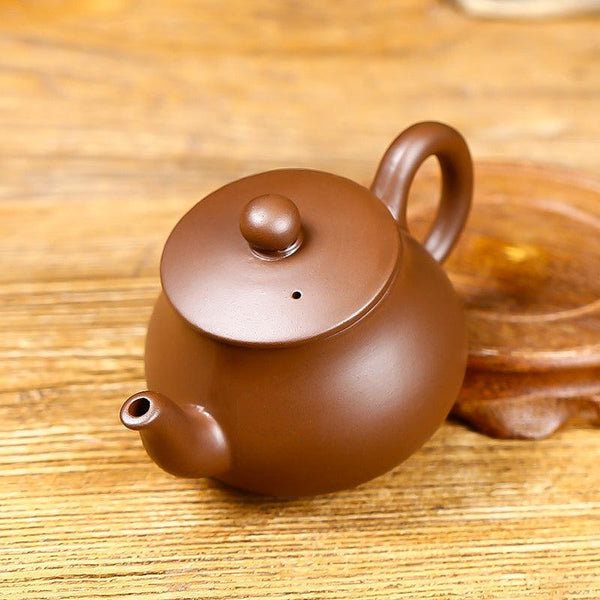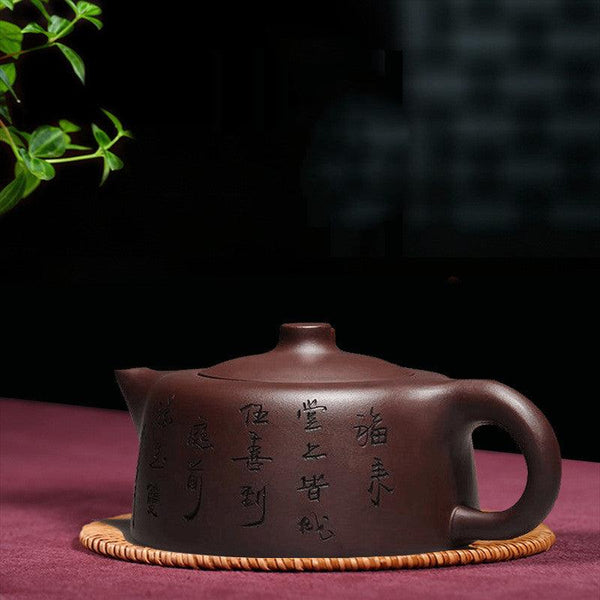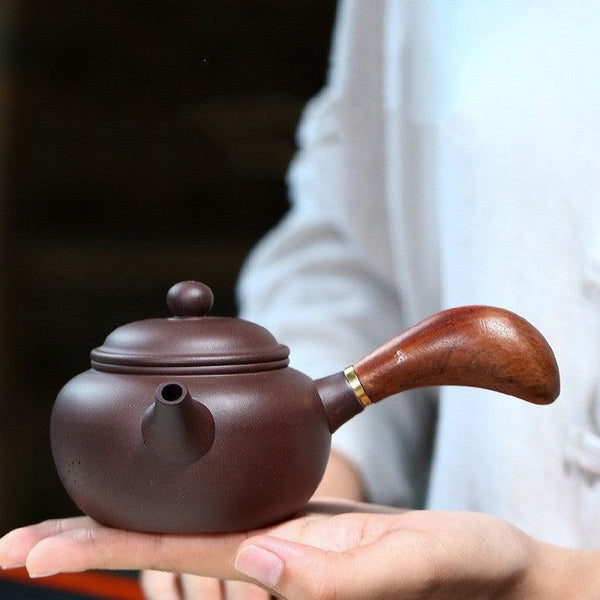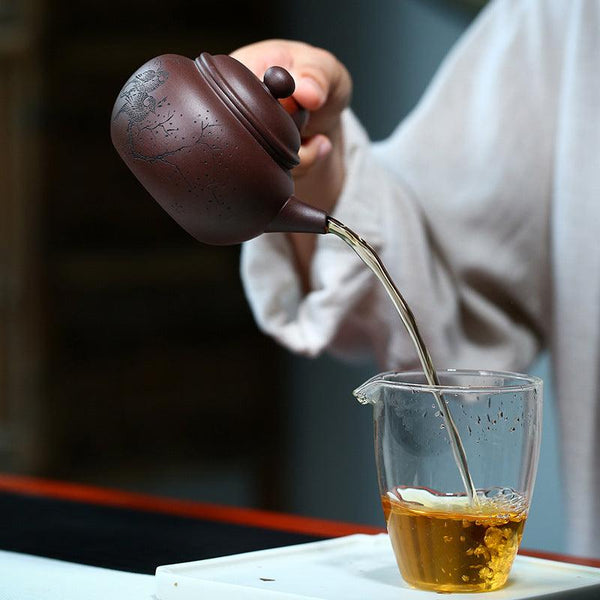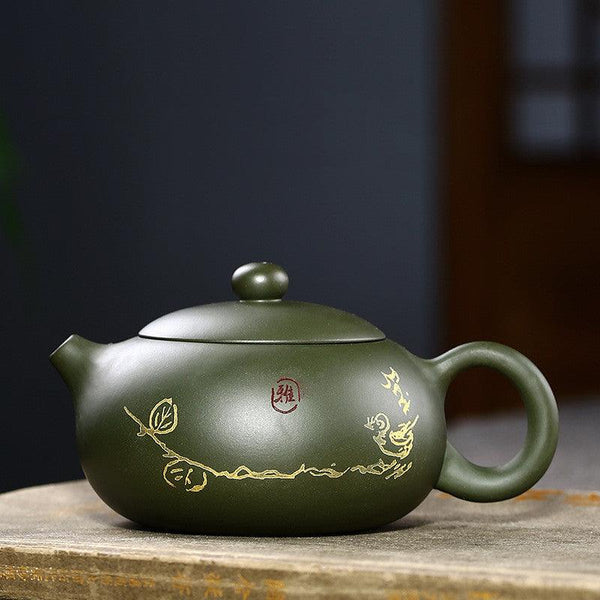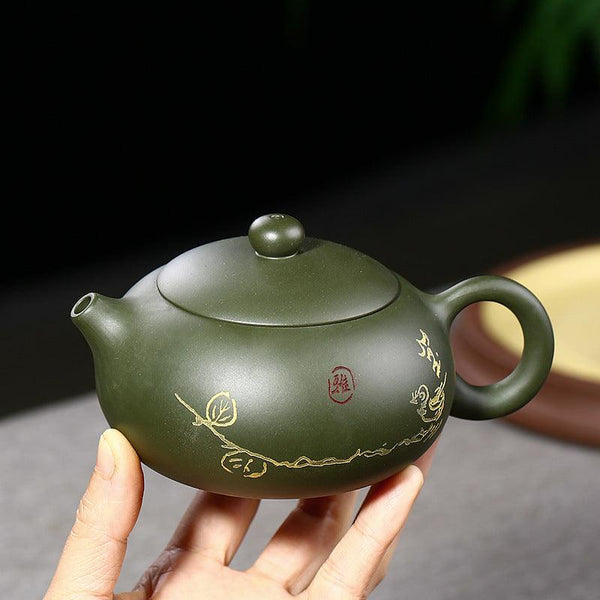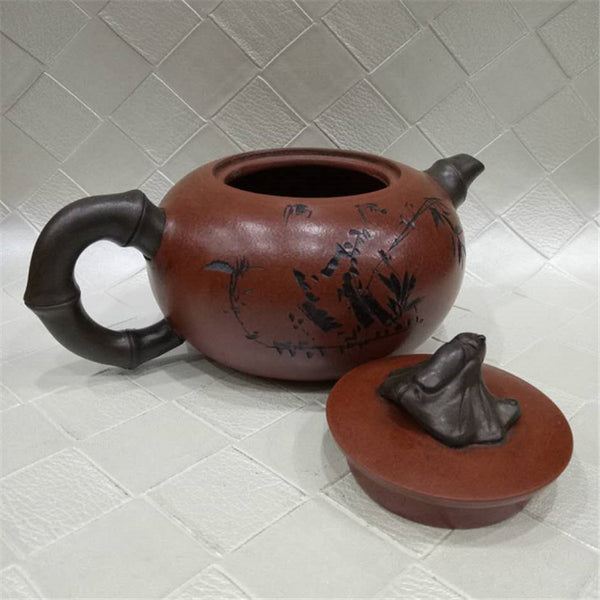Yixing teapots, also known as Zisha teapots, represent a treasured tradition in Chinese tea culture. These handcrafted teapots, made from specialized Yixing clay, are renowned for their exquisite craftsmanship, unique clay properties, and rich cultural heritage. This article delves into the fascinating process of transforming raw Yixing clay into a masterpiece teapot.
Preparing the Clay
The journey of a Yixing teapot begins with the careful selection and preparation of the clay.
Selection of Yixing Clay Types (Zisha, Zhuni, Duanni)
Yixing clay, also called Zisha clay, is sourced from Jiangsu Province, China. There are several types of Zisha clay, with purple clay (Zisha), red clay (Zhuni), and yellow clay (Duanni) being the most popular. Each type has unique characteristics that influence the texture, color, and even the taste of the tea brewed within the teapot.
Essential Clay Preparation Steps: Weathering, Crushing, Screening
Once the clay is sourced, it undergoes various preparatory steps. Weathering is the initial step, where raw clay is exposed to the elements, allowing it to soften and purify naturally. After weathering, the clay is crushed and screened to remove impurities, yielding a fine, consistent powder.
Forming a Suitable Clay Mixture
With impurities removed, artisans add water to the clay powder to create a pliable mixture. This kneaded clay is carefully adjusted to the correct consistency, ensuring it is neither too wet nor too dry, preparing it perfectly for the next stages.
The Crafting Techniques
Crafting a Yixing teapot is a meticulous process that requires both skill and patience.
Forming Clay Sheets and Strips
To begin forming the pot, artisans flatten the clay into sheets and roll it into strips. This process requires repeated hammering and rolling to ensure an even thickness, much like building a sturdy foundation.
Shaping the Pot Body Using Clay Strips
The clay strips are coiled and shaped into the basic form of the teapot. Shaping the pot’s body is a delicate step requiring skill and precision to achieve the desired shape and thickness. The base of the teapot, created separately, is carefully attached to the body to ensure structural integrity.
Creating Spout, Handle, and Knob
The teapot’s spout, handle, and knob are crafted individually and attached with great care to ensure both functionality and aesthetic harmony. The angle of the spout, the comfort of the handle, and the balance of the knob all contribute to the overall quality and usability of the teapot.
Detailed Finishing and Decoration
Once the primary form is complete, artisans meticulously smooth and polish each component, ensuring a refined finish. Decorative techniques such as carving intricate patterns, painting traditional motifs, or inlaying stones or metals are used to add artistic elements that make each teapot unique.
The Firing Process
Firing is a crucial step that transforms the clay from fragile material into a durable, functional teapot.
Importance of Temperature and Duration Control
The firing temperature and duration must be precisely controlled to prevent cracks or deformities. The clay undergoes chemical and physical changes during this stage, solidifying into a robust structure capable of withstanding hot water and long-term use.
Creating Unique Textures and Colors Through Firing
Different firing techniques and temperatures result in unique textures and shades. For example, Zhuni clay teapots typically have a vibrant red hue, while Zisha clay teapots range from purplish to brown tones, giving each piece a distinctive aesthetic.
Final Touches and Inspection
After firing, each teapot undergoes a thorough inspection to ensure quality. Artisans check for imperfections, ensuring that every curve and detail meets high standards. The final product should be both functional and visually pleasing, embodying the artist's skill and dedication.
Cultural and Artistic Significance
Yixing teapots hold deep cultural value, symbolizing traditional Chinese craftsmanship and art. Many collectors seek these teapots not just for their functionality but for their historical and artistic significance. Each teapot is a work of art, encapsulating cultural symbolism and the legacy of Chinese artisanship.
Conclusion
The creation of a Yixing teapot is a journey that starts with raw clay and ends with a remarkable piece of art. From selecting the clay to shaping, decorating, and firing, every step is a testament to the skill, patience, and artistry of the craftsmen. Owning a Yixing teapot offers more than just a vessel for tea; it provides a connection to centuries of tradition and a deeper appreciation for the art of tea.
Essential Tools for Crafting Yixing Teapots >> Shop Now


